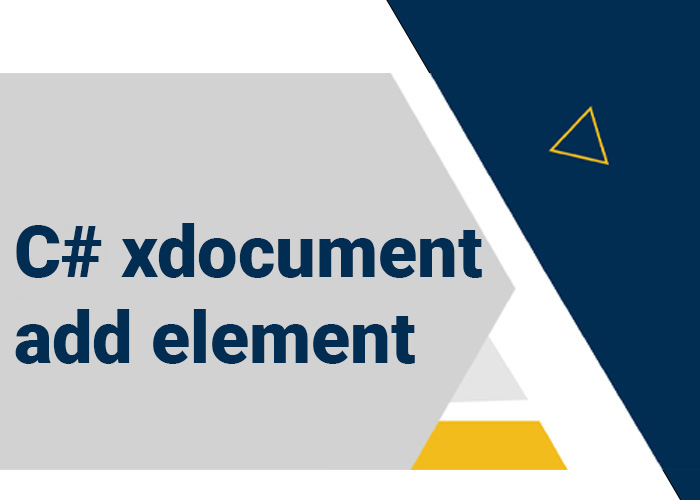Adding Elements Using XDocument in C#
XDocument is a class in C# that provides a rich set of features for working with XML data. One of the core functionalities of XDocument is the ability to dynamically add elements to an XML document. This capability is particularly useful when building XML structures programmatically or when modifying existing XML files. In this guide, we'll explore how to add elements to an XDocument instance effectively.
Basic Element Addition
The simplest way to add an element is by using the Add method on an XElement object. Here's how to start with an empty XDocument and add elements:
Example: Creating a New Document and Adding Elements
// Create a new XDocument
XDocument xdoc = new XDocument();
// Define the root element
XElement root = new XElement("Library");
xdoc.Add(root);
// Add a new book element to the library
XElement book = new XElement("Book",
new XElement("Title", "Effective C#"),
new XElement("Author", "Bill Wagner")
);
root.Add(book);
// Display the XML document
Console.WriteLine(xdoc);
Adding Multiple Elements
You can also add multiple elements simultaneously by using the Add method multiple times or by passing an array of elements.
Example: Adding Multiple Books to the Library
XElement book1 = new XElement("Book",
new XElement("Title", "C# in Depth"),
new XElement("Author", "Jon Skeet")
);
XElement book2 = new XElement("Book",
new XElement("Title", "Pro C#"),
new XElement("Author", "Andrew Troelsen")
);
// Add books to the root element
root.Add(book1, book2);
Adding Elements Conditionally
Sometimes, you might need to add elements based on certain conditions. XDocument makes it easy to handle such scenarios.
Example: Conditionally Adding Elements
if (DateTime.Now.DayOfWeek == DayOfWeek.Monday)
{
root.Add(new XElement("SpecialOffer", "Monday discount"));
}
Adding Complex Elements
XDocument supports the creation of complex elements that include attributes, nested elements, and even comments.
Example: Adding a Complex Element
XElement book3 = new XElement("Book",
new XAttribute("id", "103"),
new XElement("Title", "Learning C#"),
new XElement("Author", "Michael Morrison"),
new XElement("Price", "29.99"),
new XComment("Check for the latest edition")
);
root.Add(book3);
Conclusion
Using XDocument to add elements to an XML document provides a robust way to handle dynamic XML creation and modification in C#. The class's integration with LINQ also makes it a powerful tool for querying and managing XML data in a way that's both efficient and readable.





